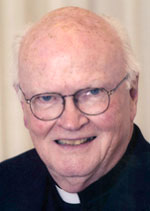Earl F. Cheit saw it coming 43 years ago. “The New Depression in Higher Education” was the title given to a report he wrote for the Carnegie Commission on Higher Education. It carried the subtitle, “A Study of Financial Aid Conditions at 41 Colleges and Universities.”
Cheit, who died in early August after a long career as professor and administrator at the University of California, Berkeley, found that costs were rising faster than income for America’s colleges and universities. The ones that were going to prosper, he said, would need substantial infusions of state and federal funds while they themselves would have to raise tuition and cut costs.
A news story in The New York Times when the report was issued in 1971 was accompanied by an editorial that read: “The future capacity of higher education to serve the country’s youth, and the nation itself, is in jeopardy at the very moment when its top priority ought to be the costly unfinished task of extending equal educational opportunities to the poor and deprived.”
That task remains unfinished and, as a priority, is nowhere near the top.
[hotblock]
Over the past four decades, tuition has soared, but government grants have not. Private institutions began “discounting” tuition and offering student loans. They were less attentive to the challenge of cutting costs. Now many colleges are worried about survival as their students struggle to manage excessive debt burdens and cope with uncertain postgraduation employment prospects.
Back in the days of the Great Depression (think of it as the “Old Depression” for both higher education and the rest of the nation), the federal government came up with New Deal initiatives like the Civilian Conservation Corps to assist unemployed youth and the Home Owners Loan Corporation to rescue homeowners from foreclosure on mortgages.
Now that the new Depression is taking its toll on higher education and the Great Recession has adversely affected just about everyone in the American middle class (not to mention the poor), we need some big ideas to save our colleges and serve our youth.
The GI Bill of Rights qualified as a big idea back in 1944 when introduced as “The Servicemen’s Readjustment Act” by a Congress fearful that unemployment of Great Depression proportions would greet returning service members after World War II.
The “GI” stood for “government issue,” as applied to uniforms, boots, blankets, weapons and the like that draftees received upon induction into the armed forces. Service members themselves became known as “GIs.”
The GI Bill gave veterans two months of free higher education for each month they had spent in uniform. It proved to be the greatest investment in human capital this nation has ever made. It put many veterans through college and professional school, propelling them into higher-paying jobs that generated an impressive stream of income-tax payments that, for some, continue to this day.
It can fairly be called a self-financing program. The return was enormous considering that the GI Bill paid tuition, fees and books up to only $500 a year (that’s what tuition was in those days) along with a modest living allowance while in school.
If today’s unfocused youth, subject to evident drift and purposelessness, had a GI Bill-type incentive to join the Peace Corps, AmeriCorps, Teach for America or one of many other modestly stipended, nonmilitary national service opportunities, not only would they get themselves into gear, but they could count on federal assistance later to get them through college without crippling debt.
The GI Bill proved to be the salvation of many young Americans and many private colleges. Something similar is needed today.
***
Jesuit Father Byron is university professor of business and society at St. Joseph’s University, Philadelphia. Email: wbyron@sju.edu.
PREVIOUS: Ebola brings out the best and worst of people
NEXT: How it feels to be left out, without an ice bucket




Share this story